#008
Giving back to society
with the output of
mathematical models
Hitomi Sano
Japanese Color: MIKANCHA-iro
#008
Hitomi Sano
Japanese Color: MIKANCHA-iro
MOVIE

Assistant Professor
Faculty of Environment and Information Studies
“What is life?” This is the eternal question that has been raised by bioscientists around the world, past and present, and the pursuit of the answer continues in our world even today.
In recent years, the field of life sciences has undergone surprisingly rapid changes and taken significant steps forward, including advancements in genome analysis and the birth of induced pluripotent stem (iPS) cells.
However, even such advancements in bioscience are built on a foundation of the results of quiet and steady fundamental research about individual cells and the dynamics of a single molecule.
One of the examples of such fundamental research is the establishment of mathematical models through systems biology, with a focus on cardiogenesis, being undertaken by Assistant Professor Hitomi Sano.
I specialize in systems biology, which is typically recognized as an academic field that seeks to understand life phenomena as a system. However, experts of this field have different research subjects and topics of interest. For this reason, the definition of “systems biology” itself differs depending on the expert. Nevertheless, this is precisely what we could describe as one of the characteristics of systems biology.
To me, systems biology is an academic discipline that takes cells as the subject of study, and explores the relationship between how the dynamics of the molecules such as metabolites and proteins and ions in cells maintain the functions of the cells. Hence, depending on the subject of study, there are also cases where we focus on how the dynamics of an organ contributes to the functioning of an individual, for example, to his/her health.
Specifically, I conduct research into the process in which the heart is created in the fetus of laboratory animals. The process in which a fetus, and the organs of a fetus, matures into the shape and size of an adult, is known as “development.” I focus on the study of cardiogenesis, or how the heart is developed. My interest lies in the systems of the organ that we call the “heart,” which plays the role of circulating blood around the entire body while undergoing dramatic changes in shape and size, yet never once coming to a stop.
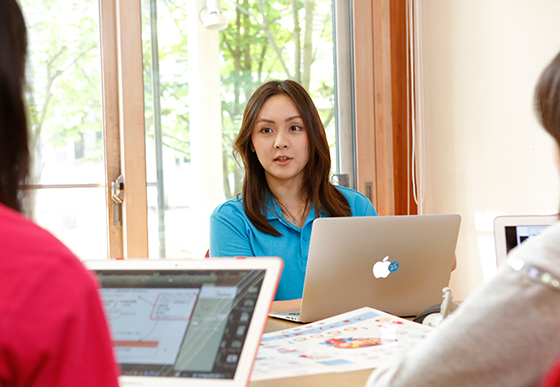
In systems biology, bio-simulation is used in various projects, including collaborative research.
Bio-simulation involves the process of numerical simulation, which describes life phenomena in the form of mathematical formula, and solves these formula using computer programs. Here, the manipulation of the constants and parameters of mathematical formula expresses the “changes” of all elements, including the environment and circumstances surrounding life phenomena.
For example, in the field of studies of the heart, which I am engaged in, it is possible to simulate changes in the environment surrounding the heart by describing the system and process of the development of the heart with a set of differential equations, then manipulating the constants and parameters included in that equation.
Depending on the simulation, it may be possible to hypothesize conditions that are difficult to observe in experiments, or to create situations that do not seem to be probable in reality. Through this process, we are then able to extract the parts that we need in order to conduct further experiments and measurements for finding out what we do not currently understand about cardiogenesis to begin with.
The process of narrowing down the number of hypothesis that should be validated through physiological experiments also helps us to save on research funds incurred in experimental studies, and could therefore be described as a form of “eco” experimentation.
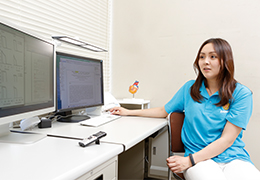

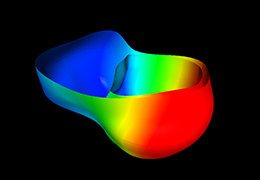
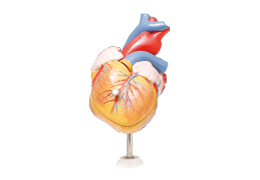
The mathematical formula used to describe a single cell that makes up the heart stretches over 30 A4-sized pages. Based on this, the development of the heart is simulated by changing the constants and parameters.
In tandem with significant improvements in the performance of computers, there has been a dramatic increase in the number of cases whereby numerical simulation is used to recreate life phenomena.
For example, the K Computer, a supercomputer jointly developed by RIKEN* and FUJITSU LIMITED, has made it possible to recreate the entire heart and its dynamics as-is. Previously, it had only been possible to recreate sections such as cells, tissues, and parts of the organ. This re-creation of the entire heart has been applied to studies of treatment methods and evaluations of the efficacy of drugs.
*Japanese research institution
Hence, the advantage of simulation lies in its ability to capture the whole picture of the subject through the manipulation of constants and parameters included in a mathematical formula, such as presenting a new hypothesis based on the assumption of every change in life phenomena, or taking a bird’s-eye view of the whole picture in order to extract problems that could not be identified before. Furthermore, the method has also drawn attention for its ability to keep economic costs low.
However, under current conditions, bio-simulation has not yet attained a degree of precision that allows it to replace experimentation completely. To begin with, changes that cannot be expressed as constants and parameters in a mathematical formula cannot be simulated. In addition, the results of simulation do not correspond to the results of experimentation in many cases. Our challenge for the future is to improve the expressive capability of mathematical models while comparing the results against findings obtained through physiological experiments.
The proteins that are specifically present in the cells that make up the heart of a fetus do not exist in the heart of an adult. However, these proteins have been known to reappear even in adults, in cases where the heart has experienced cardiac arrest or other problems.
Today, attempts are being made to transplant heart tissue created from induced pluripotent stem (iPS) cells, and clinical trials on human beings have commenced. We now know that the changes observed during the culturing process, in which the cells of the heart are reproduced through iPS cells, share many commonalities with the process of natural cardiogenesis.
In light of that, we considered that it would be possible to build a comprehensive cell model by building a mathematical model that replicates the process of cardiogenesis, and is able to describe the dynamics and system of artificial cells created from diseased hearts or stem cells.
That is the project of building a comprehensive cell model that replicates the process of cardiogenesis, which I am currently working on.
Going forward, I aim to move forward on my work to build a mathematical model for cells by further strengthening my collaboration with the team at the Institute for Advanced Biosciences of Keio University in Tsuruoka City, Yamagata Prefecture, that is conducting metabolome analysis, said to be the most cutting-edge analytical technology, as well as the team at Fujisawa Laboratory for Advanced Biosciences that is conducting experiments using iPS cells.
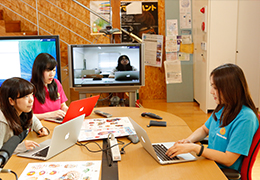
By further strengthening collaboration with the Institute for Advanced Biosciences, a bioscience research institute established at the Tsuruoka Town Campus (Tsuruoka City, Yamagata Prefecture), and with the Fujisawa Bioscience Laboratory, she aims to move forward on building mathematical models based on OMICs data.
The output of scientific research mostly appears as English papers that are submitted to internationally recognized academic journals. However, I have recently been considering the possibility of giving back to society the results of scientific research in formats other than as academic papers.
During the course of my doctoral studies, I was mentored for 1 year by the bioscientist, Professor Akinori Noma (in 2007, he was a professor at Kyoto University). He had often spoken of his desire to achieve a level of computer simulation that could provide the knowledge written in thick textbooks about bioscience, to everyone in a way that was easy to understand. Studying under Professor Noma taught me that there was also an educational aspect to the work of conducting computer simulations of complex life phenomena.
Hence, in the future, I aim to engage in numerical simulations that describe life phenomena in mathematical formula, and give back the results of these simulations to society not only through academic output, but also widely in other forms.
The findings obtained through physiological experiments that are used as reference in building mathematical models involve the injection of massive research funds. I believe that researchers engaged in bio-simulation research have the duty to integrate these findings into mathematical models and give back to society in a way that can be easily understood by everyone. As a part of that, I plan to participate in joint projects in the field of design in the future.

A joint project in the field of design has commenced through an inter-disciplinary collaboration that is characteristic of the Keio University Shonan Fujisawa Campus (SFC). There are growing expectations toward the future development of this project, such as how 3D graphics are applied to academic output.

Hitomi Sano
Assistant Professor, Faculty of Environment and Information Studies, Keio University. She has completed the Doctoral Program at the Graduate School of Media and Governance at Keio University. She is a member of the Physiological Society of Japan. Her specialization includes systems biology and bio-simulation. She received the encouragement award from the President of Keio University in 2004. Since 2006, she has been a recipient of the Research Fellowship for Young Scientists (DCI) under the Japan Society for the Promotion of Science, converted to Research Fellowship for Young Scientists (PD) in 2008 upon the early completion of her Doctoral Program. In 2010, she was appointed Project Research Associate, Graduate School of Media and Governance, and conducted research at Institute for Advanced Biosciences, Keio University. She has served in her current position since September 2011.

2015.Oct ISSUE